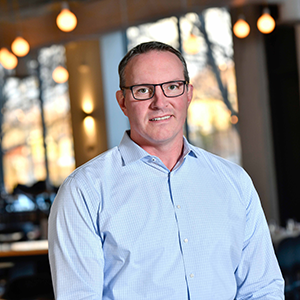
Image courtesy of Pexels
In the wake of COVID-19, telemedicine has become the only means for delivering patient care for many physician groups. As healthcare providers adapted to treating patients virtually, patients likewise adapted to disrupted routines. For those dependent on prescription medication to treat or manage a medical condition, “going to the pharmacy” was an errand replaced by curbside pickup, delivery service or mail order.
Necessity is the mother of adoption
With no other options, the physician-patient interaction went digital after years of discussion about the promise of telehealth. CMS approval of pilot hospital-at-home programs accelerated adoption further. These alternative care sites kept patients free from the risks of hospital-acquired infections and reserved empty beds for possible surges. Program results largely demonstrated that unchanged patient outcomes outside of the hospital setting. Moreover, remote care costs as much as 30% less given the elimination of facility fees.
Given the forces that combined to drive more patient-centered innovation through care delivery systems, it is no surprise that there is great interest in sustaining these new models. Since the start of COVID, more than 20 virtual care systems, supported by billions of investment dollars, have launched. In addition, large, self-insured employers, forward-looking delivery enterprises and visionary entrepreneurs are collaborating to make home-based care a permanent option.
Extending the direct-to-patient movement
As stakeholders embrace alternative care sites and their enabling technologies, pharmaceutical supply chains must also evolve to support this watershed patient-centric movement. Interestingly, the research arms of manufacturers and their contract research partners have helped propel trials out of physical research sites and into patients’ homes. Much like telehealth, virtual trials have long promised to increase trial participation and adherence given increased convenience for the volunteer, including the receipt of trial therapies at home, uploading wearables data and virtual coordinator check-ins.
Looking more closely at how rapidly direct-to-patient medication delivery is expanding, and taking cues from the success of site-less clinical trials, what can supply chains expect in terms of commercial challenges and opportunities?
Packaging changes. Historically, pharmacies have been at the center of patient medication needs, and as a result, packaging has tended to focus on the needs of pharmacists and their filling workflows. With the increasing decentralization of medication fulfillment, packaging must similarly adapt to the needs of each patient receiving it from a delivery person as opposed to a licensed pharmacist. Packaging considerations in this sense are broad and include creating a “frustration-free” experience hallmarked by simple yet informative instructions. This is the first chance the manufacturer has to instill confidence in the patient that will translate to brand loyalty.
Sustainability requirements. Big Pharma is primarily focusing environmental, social and governance (ESG) efforts on becoming carbon neutral over the next decade. Supply chain operations, including distribution, are often a significant producer of greenhouse gas. Savvy consumers concerned about the effects of climate change are showing an increased interest in sustainable packaging and circular economies. For therapies shipping directly to patients, a high-performance reusable container demonstrates a commitment to sustainability. Moreover, these containers offer branding and education opportunities, given their lifecycle of dozens upon dozens of uses.
Ensuring temperature control
The majority of approved therapies today require cold-chain handling. Until COVID and mRNA-based vaccines, most laypersons had not heard of this term or appreciated temperature control’s role in treatment effectiveness. As these therapies reach patients, high-tech yet low-cost sensors can validate the temperature and condition of the package, so there is no question about its condition. Outbound calls or texts can complement such sensors to keep the patient informed on real-time package status for timely retrieval.
Adherence opportunities. Once the medication has reached the patient, the next hurdle is its effective use. Today, a patient may pick up a prescription, take only a single dose, and the provider is none the wiser. This is precisely why adherence remains a challenge. But as smart packages and vials evolve, there is the opportunity to leverage delivery information to kickstart an adherence program like those deployed in trials to keep volunteers enrolled and engaged.
Greater collaboration. The shift of care to the home for some populations or conditions will require a mobile medical workforce. Imagine a “visit-in-a-box” scenario that allows a practitioner to show up at the patient’s home with no external supplies required. Instead, a package shipped to the patient houses all the necessary equipment for the encounter, including PPE, supplies, and medication. After the visit, the practitioner repackages medical waste. While this scenario may require collaboration across supply chains, such coordination enables caregivers to focus their efforts and practice at the top of their license.
Finding the silver lining

Jay McHarg
At the beginning of the pandemic, pundits warned that the fragile U.S. healthcare system would collapse. Thankfully, hospitals could stay solvent, and telemedicine quickly expanded to bridge access gaps, staving off any such collapse. While the pandemic exposed several weaknesses, there was a positive movement toward patient-centric practices that had been aspirational or in the pilot phase for years before March 2020.
Home-based care for acute and chronic conditions will become more commonplace, and supply chains that are ready and able to meet the need will be part of a highly transformative period.
Jay McHarg is the CEO of AeroSafe Global. Jay earned both a bachelor’s and master’s degree in engineering from McGill University and an MBA from Babson College.